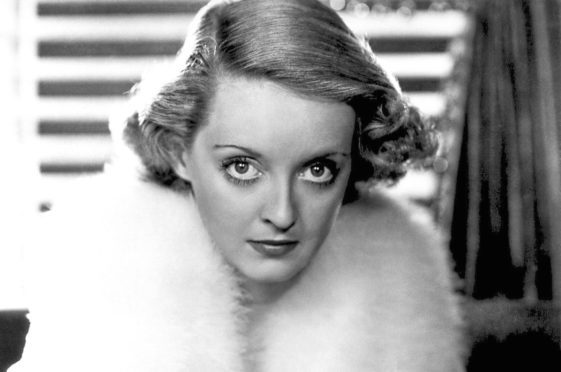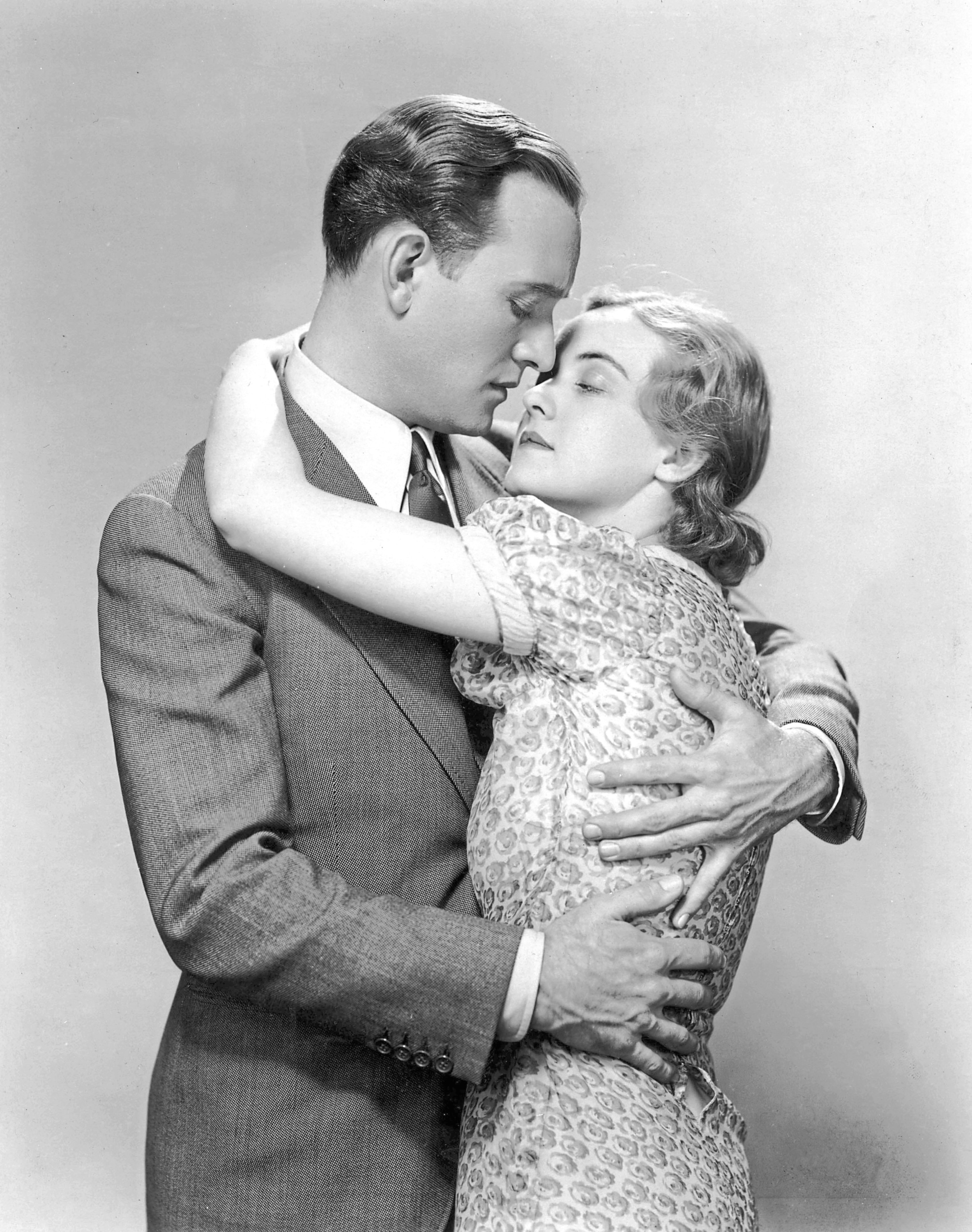
Many actors are deeply sensitive to criticism about their talents or appearance – Bette Davis let her success do the talking.
She was the first person to get five consecutive acting Academy Award nominations and first woman to get an American Film Institute Lifetime Achievement Award.
So when they joked about her acting, or described her as no beauty, she would simply have a little laugh and put out another hit movie.
For the real audiences, not the snobby critics, Bette Davis was utterly watchable and carried some famous films which would have been nothing without her.
Davis, who died 30 years ago, on October 6 1989, is a genuine Hollywood legend.
The great Graham Greene summed her up in 1936, during her early days, saying: “Even the most inconsiderable film seemed temporarily better because of that precise, nervy voice, the pale ash-blond hair, the popping neurotic eyes, a kind of corrupt and phosphorescent prettiness.
“I would rather watch Miss Davis than any number of competent pictures.”
Of those looks, Bette herself didn’t give a damn, happily pointing out that she had achieved all she did without relying on a pretty face. In fact, she went out of her way to find nasty, ruthless, cold characters to play, and being pretty as a picture just wouldn’t have suited many of the scary ladies she portrayed.
She was, of course, as cute as any baby when she came into the world as Ruth Elizabeth Davis on April 5 1908, in Lowell, Massachusetts.
Dad Harlow and Mom Ruth were calling her Betty within months, and the child was broken-hearted when they separated when she was just seven years old.
Sent to a rather bleak boarding school, things can’t have been easy, but she was a very independent girl.
Later, she’d be a Patrol Leader with the Girl Scouts, and Bette was always a leader, not a follower. Her own “leader” was a young lady from Port Talbot, Glamorgan, Wales. It was after seeing this lady, Peg Entwistle, in a production of Ibsen’s The Wild Duck that Bette decided an acting life was for her.
Tragically, Peg killed herself at just 24, jumping from the famous Hollywood sign in California, but Bette would reveal: “The reason I wanted to go into theatre was because of Peg Entwistle.”
To her disappointment, early attempts at finding such work were met with rebuttals. Bette, they told her, was too frivolous, didn’t take acting seriously enough. How that would change!
By the age of 21, to her delight, she was selected to play Hedwig, the very part she’d seen Entwistle play, and there was no going back now. Bette was hooked on theatre, and film would soon follow.
After Broadway, she moved to Hollywood in the summer of 1930, but her early movies didn’t fare very well.
Two years later, moving from Universal to Warner Brothers, things began to look up.
Bette would spend almost 20 years with them, and she always remembered how nobody had even come to meet her off the train when she first reached Tinseltown. Apparently, a representative had been at the station but didn’t see anybody who “looked like an actress”.
One of her earliest jobs was another horrible experience she’d never forget.
“They laid me on a couch, and I tested 15 men,” she would say with a shudder.
“They all had to lie on top of me and give me a passionate kiss. Oh! I thought I would die!”
So much for the glamour and glitz. Things could only get better, and indeed they did.
Half a century before Kim Carnes would have a massive US No 1 hit single with Bette Davis Eyes, cinematographer Karl Freund told studio bosses that Bette had “lovely eyes” and would be perfect for Bad Sister.
This 1931 movie would be her debut, and Bette’s nerves weren’t helped when she overheard a boss say she had no sex appeal.
If it and its follow-up Seed failed to produce a box-office blockbuster, they did smooth off any rough edges and prepared Bette for the much higher profile she’d soon enjoy.
Opinions were very different by the time 1932 Warners movie The Man Who Played God was released, with one paper saying: “She is not only beautiful, but she bubbles with charm.”
Not things many critics would accuse her of in the decades ahead, but wonderful to read at that time, just as her nerves and self-doubts were coming out.
That was also the year she first got married, to Harmon Oscar Nelson. The press made much of the fact he earned just $100 a week while she made 10 times that.
It would be a troubled marriage, with Bette going through a string of abortions, and Nelson wouldn’t even let her buy a house until he could pay for it himself. Clearly, the press had got to him.
She even felt she had to explain things in public, describing how many Hollywood stars earned far more than their unknown husbands. As if it was anybody’s business but theirs!
Clearly, though, it was a sign of what a big name she was becoming, that the papers were this interested in her.
The year 1932 also saw a big box-office hit with Bette alongside Spencer Tracy in 20,000 Years In Sing Sing.
A drama set in the notorious maximum security New York penitentiary, he was the inmate and she was the girlfriend.
It was based on the factual book of the same name written by a warden at Sing Sing, Lewis Lawes, and Davis and Tracy had plenty of great chemistry in front of the cameras. The ever-popular actor had always been one of Bette’s true idols, so she loved every minute of it.
It remains a fascinating thought that it might have worked out very differently indeed if Jimmy Cagney, originally slated for the job, had done it.
Instead, as he was having another running battle with his studio bosses, it went to Tracy and we all got a cracker, while Bette got to work with her hero.
She would always say she’d have loved to do more movies with him, but she had to wait several years just to work with him again, and that was on a radio job.
Anyone who is a fan of the wonderful writer W Somerset Maugham will have a high regard for Of Human Bondage, one of his greatest works.
The story of club-footed orphan Philip Carey, it’s a large book and a thoroughly satisfying read. And Bette Davis, playing Mildred Rogers, reproduced it so well on the big screen that it was the making of her.
It came out in 1934, and brought her huge acclaim. It’s thought that some very big-name actresses turned down the chance to play a character so horrible and nasty, but Bette did her to grim perfection.
The sort of girl who’ll use people and then abandon them, only to come crawling back when her own life hits the rocks, it’s not hard to see why some actresses feared it might soil their goody-goody reputation. But it was grist to Bette Davis’s mill, and it still looks great today.
Maugham, who grew up an orphan with a bad stutter, often had to deny Of Human Bondage was simply an autobiographical account of his own troubled childhood and youth.
He must have been thrilled to see Bette Davis and Leslie Howard turn it into such a watchable event on the big screen.
They even realised during filming how good she was going to be in it – Howard didn’t fancy her talents at first, they say, but was bowled over as filming went on.
And director John Cromwell loved what she did so much that he let her do her own thing, admitting: “I let Bette have her head, I trusted her instincts.”
For the dramatic death scenes, rather than trying to look glam and anything but a dying woman, she told them: “The last stages of consumption, poverty and neglect are not pretty, and I intended to be convincing-looking.”
As ever with Bette Davis, looking stunning was least of her priorities, while being convincing and powerful was at the top.
One critic summed it up by saying it was “Probably the best performance ever recorded on the screen by a US actress.”
Now, if that is not high praise, we don’t know what is.


Enjoy the convenience of having The Sunday Post delivered as a digital ePaper straight to your smartphone, tablet or computer.
Subscribe for only £5.49 a month and enjoy all the benefits of the printed paper as a digital replica.
Subscribe © Universal/Kobal/REX/Shutterstock
© Universal/Kobal/REX/Shutterstock © Allstar/WARNER BROS.
© Allstar/WARNER BROS.  © Allstar/WARNER BROS
© Allstar/WARNER BROS